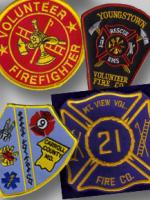
Citizen 2.0, Step 3: Co-Deliverer

In his book, "The McDonaldization of Society," George Ritzer points out an invisible obvious fact: McDonald's is able to keep its costs low in part becuase its patrons perform essential functions for the store. They pour their own drinks, bus their own tables, get their own napkins and other table settings, and in some locations even add their own condiments to their burgers. There's an unspoken compact: customers enjoy a lower price and food customized to their liking, and in return they help co-deliver their meal.
Questions of quality aside, it works out well for everyone; diners get the meal they want by receiving only the basics from the store and customizing it themselves (ketchup? Mustard? Mayo? Pickles? Diet Coke with lemon?) and at a lower price. This is the same basic dynamic at work in Gov 2.0 when we talk about co-delivery. Government gives people the tools to help them partner with government (rather than rely on in) to deliver services.
Examples of government agencies enabling citizens to become co-deliverers abound:
- Volunteer Fire Fighters: perhaps the best example of co-delivery, though it is seen as the government's job to respond to fires, many communities boast highly-effective volunteer fire stations.
- Citizen Corps (FEMA disaster recovery): for people who want to assist the Federal Emergency Management Administration (FEMA) help people in the aftermath of a disaster.
- Volunteers-in-Parks (VIPs) of the National Park Service: for people who want to help maintain national parks or assist park visitors.
- Volunteer Income Tax Assistance from the IRS: for tax-prep professionals who want to provide people with special needs prepare their taxes.
- Volunteering at local schools: many parents want to volunteer in their local schools in clerical or communications roles. Some even help as hall monitors or teaching special classes and leading extra-curricular groups.
- Volunteer Neighborhood Clean-up in Washington, DC: keeping the streets and sidewalks clean is the dual responsibility of the government and the people who live on that street. The DC government helps citizens do their part by providing many of the tools necessary to pick up trash and get it ready for haul-away.
In addition, there are nongovernment volunteer organizations that help fulfill government functions, for example:
- KaBoom: public outdoor playgrounds are, as their name suggests, the responsibility of the government. But even before the economic downturn, parks often receiving short shrift in municipal and county budgets. KaBoom helps people build and maintain outdoor playgrounds by themselves.
- Cure MN River: rivers are even more public than parks, yet private individuals often band together to preserve the natural state of natural resources.
- Guardian Angels - one undisputed function of government is law enforcement, yet both the private sector and nonprofit groups assist in that activity, the Guardian Angels among the latter.
The benefits of co-delivery accrue to the individual who volunteers his or her time, to the government that facilitates the activity, and to every taxpayer.
- Volunteers are rewarded first by a sense of civic pride, second by knowing that the job was done to their expectations and their idea of quality, and in the skills that they enhance by practicing their skills;
- Governments benefit by offloading labor (and thus cutting costs) without sacrificing mission-critical tasks; and
- Every taxpayer benefits by seeing their tax dollars stretched further, making possible a government that does more with less.
But governments have always relied on volunteers to help shore up professional government activities. How does Gov 2.0 make co-delivery easier or more rewarding?
Gov 2.0 Makes Co-Delivery Easier
Here are three ways that government agencies can make it easier for people to co-deliver government services:
- Increase the personal and technological ties between individuals, groups, and government. An example of this already exists as the Office of Faith-Based and Neighborhood Partnerships. Collaboration and co-delivery is more likely to occur and succeed when there are people from both within and beyond government who are looking for co-delivery opportunities and have experience in implementing successful programs.
- Allow for greater self-organization. One of Web 2.0's greatest strengths is that people can organize themselves very quickly to accomplish both small-scale and ambitious tasks fairly easily. Government agencies have a host of tools (many free) at their disposal that they can deploy around projects to allow people to lead, join, and follow groups as they co-deliver government services.
- Make explicit the link between volunteer activities and the agency mission. People find it easier to volunteer if they understand that their work in meaningful. And that means that they want to engage not in the process of governing, but in the mission of governing (more on this in a moment).
Gov 2.0 Makes Co-Delivery More Rewarding
Here are three ways to make co-delivery more rewarding for individuals and groups:
- Convey a sense of accomplishment. Teeing off of point 3 above, it's essential to offer to people discreet tasks, rather than open-ended engagements, so they can have a feeling of completion. Though some people want to develop a relationship with an organization (e.g. parents volunteering at their school), many people want to do their good deed and return to their private life.
- Offer opportunities and venues for recognition. Agencies don't need to throw gala dinners (though you could allow people to self-organize them!), but may simply make available a place on their official Web site for volunteers' pictures, testimonials and the like.
- Foster a sense of community among volunteers. If agencies establish a liaison to various communities, and offer opportunities for recognition on their sites (or on the volunteer organizations' sites), they are already on their way to fostering a sense of community. But in addition to traditional community-building, agencies should take full advantage of online community tools to follow up on meaningful volunteer activities with meaningful engagement that augments the experience and enhances their relationship with the agency.



